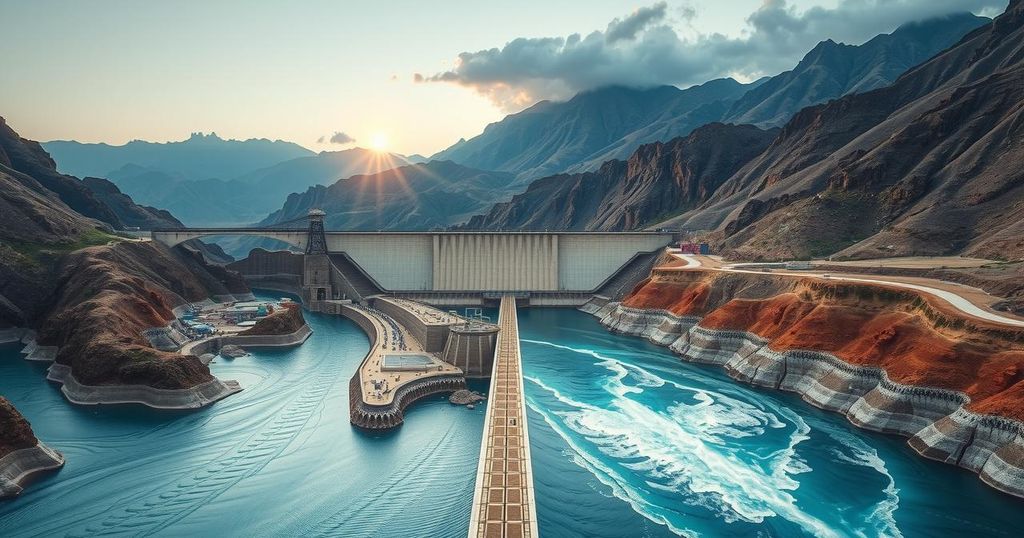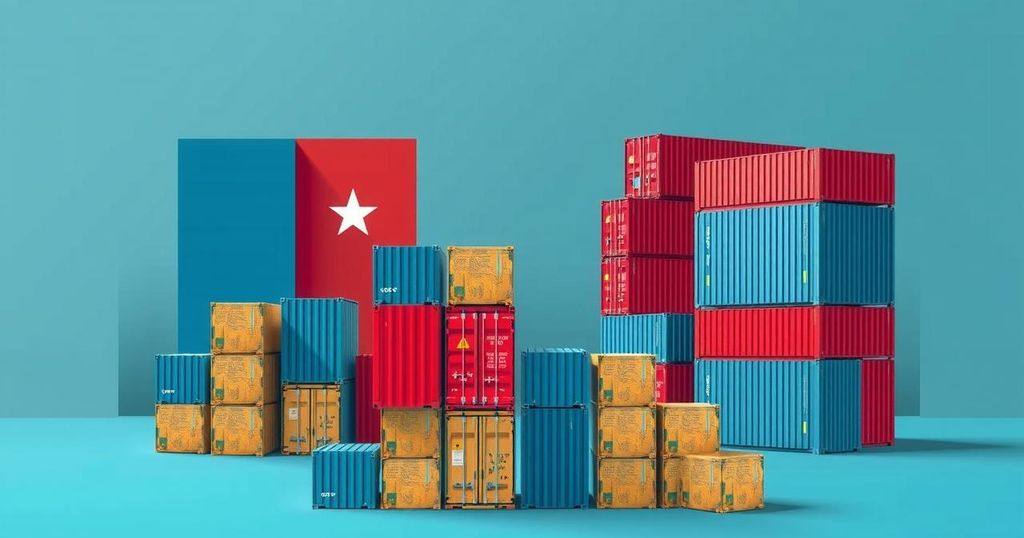Implications of China’s Medog County Mega-Dam for South Asian Water Security
China’s Medog County dam could become the world’s largest hydroelectric project, significantly affecting the Brahmaputra river system and its downstream countries, India and Bangladesh. The project poses risks of water shortages, agricultural losses, and environmental degradation, prompting concerns over geopolitical tensions and the necessity for binding water-sharing agreements.
China’s proposed mega-dam in Medog County is set to be the largest hydroelectric project globally, even surpassing the Three Gorges Dam. The Yarlung Tsangpo river, which originates in Tibet, flows into India as the Brahmaputra and then into Bangladesh as the Jamuna. This ambitious project raises alarms for both India and Bangladesh, as it threatens to disrupt the water flow crucial for agriculture and daily life for millions downstream.
The dam aims to harness Tibet’s hydropower potential while supporting China’s green energy goals. With an estimated cost of $137 billion and power generation projected at 60 gigawatts, its completion could significantly alter water distribution patterns. India, heavily reliant on the Brahmaputra for agriculture and drinking water, faces the risk of unpredictable floods and severe droughts if China’s control over this vital resource increases.
Bangladesh, dependent on the river for irrigation, drinking water, and fisheries, stands to suffer from reduced water availability, particularly during dry months. Reports indicate that even a minimal reduction in the river’s flow could greatly affect agricultural output, potentially leading to greater food insecurity and exacerbating regional migration issues.
The ecological implications of constructing the dam in a seismically active region are concerning. Past studies show that such large infrastructure can lead to landslides and disrupt fragile ecosystems, harming the aquatic life that supports local fisheries. The Brahmaputra and Jamuna rivers harbor critical fish populations which, if disrupted, would jeopardize the livelihoods of millions.
Given the unilateral nature of China’s project and the absence of a water-sharing treaty among these nations, India’s and Bangladesh’s concerns regarding transboundary river management are valid. While China has shared some hydrological data, it is deemed insufficient to address potential conflicts. India has already proposed its own dam as a countermeasure but faces obstacles in implementation.
Experts emphasize the necessity for legally binding water-sharing agreements among China, India, and Bangladesh to foster transparency and equitable distribution. A trilateral agreement could mitigate tensions and promote sustainable management, while international mediation may provide a framework for resolving disputes related to water resources.
In light of climate change and its impact on water security, South Asian nations must prioritize collaboration and effective river management. As water resources become increasingly contentious, proactive engagement is essential to avert potential conflicts.
The proposed Medog dam in China’s Medog County has significant implications for water resources management in South Asia. The Yarlung Tsangpo, which becomes the Brahmaputra in India and the Jamuna in Bangladesh, is crucial for both India and Bangladesh, supporting agricultural practices and providing drinking water. This article examines the impact of the dam on water flow, agriculture, and regional stability amid growing concerns over colonial practices of transboundary water management by China.
The Medog dam presents serious risks to water security, environmental health, and geopolitical stability in South Asia. It is crucial for India and Bangladesh to advocate for legally binding water-sharing agreements with China to ensure sustainable river management and mitigate conflicts. As climate change exacerbates water scarcity, prioritizing cooperation among these nations will be essential for maintaining regional stability and safeguarding vital resources.
Original Source: www.lowyinstitute.org








Post Comment